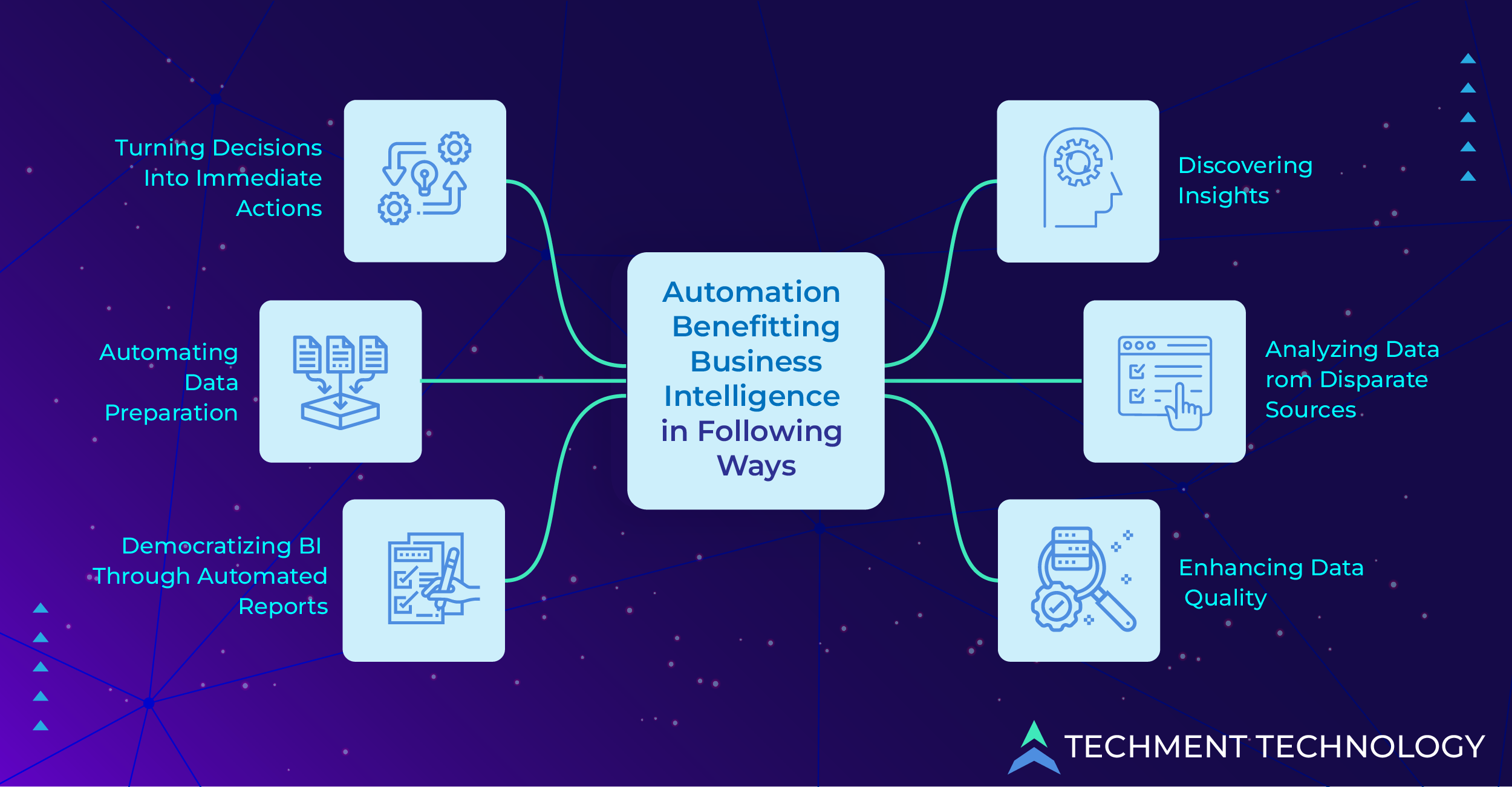Business Intelligence (BI) isn’t new but the way enterprises are gathering, analyzing, and digesting this information is certainly changing. Business Intelligence (BI) combines data analytics, business analytics, data mining, data visualization, and data tools which cover processes and methods of collecting, storing, and analyzing data from business operations and activities. With businesses moving at a fast pace, restriction on the use of resources pushes organizations to optimize resources and time to produce results. Today modern BI addresses the new business reality with self-service tools, for fast and easy-to-use integrated BI environments. Touted as “modern”, these BI products also provide an easy user experience and data sharing capabilities.
With data generation growing exponentially, enterprises are increasingly delving into automated tools and technologies to get positive value-driven business outcomes. Demand for data generation and data visualization is growing in organizations, which means the market for BI software will grow. According to the “marketsandmarkets” report, the global BI market size will increase to USD 33.3 billion by 2025 at a CAGR of 7.6% during the forecast period. Such complexity of big data has forced companies to process crude data using BI automation and utilize it to their advantage.
Making it self-reliant, modern BI solutions attempt to address two significant issues i.e., reliant on IT and manual analysis. To address these problems data analysts need to create their data model by using solutions that generate data warehouses automatically, and the second issue can be addressed by a new set of autoBI tools. These tools generate insights automatically and reduce manual data analysis. Cloud-native, web-based robotic process automation platforms and ML technologies are also expected to surpass the tipping point of adoption in near future.
To minimize the overwhelming efforts of data scientists and experts, AI and automation helps to unlock the potential of data, using business intelligence. Based on data analytics, business intelligence (BI) automation will help extract valuable insights, and provide detailed informative reports on hidden problems. BI automation can be understood as a combination of AI, ML, RPA, and Business Process Management (BPM) to redesign processes for business outcomes.
However, the process of data analytics is restricted to having a glimpse of past data or indicating the existing situation, but doesn’t generate predictions of futuristic possibilities on its own. It means BI does not guarantee data analytics on its own. This is where business intelligence (BI) automation steps in, which saves the efforts and time of data analysts from exploring and combining data.
Let’s check what BI automation provides to businesses.
How Automation Will Unlock the Full Potential of Business Intelligence Analytics?
Making automation the essence of business intelligence is a turnkey solution to bring organizations into the fast lane of a data-driven culture. Automation will help businesses to unlock potential in the following ways:

- Discovering Insights: BI automation reduces human intervention needed to gain valuable business insights. It involves artificial intelligence (AI) for automated reasoning and discovery of insights. AI functions as a continuous closed-loop process where data patterns are discovered and analyzed, and are translated into automated actions. This also helps to go beyond usual queries and identifies the occurrence of changes outside expected.
Automated tools will enable users to prioritize tasks and contribute to more intelligent decision-making. Furthermore, automating data discovery would continue the discovery process in intervals, thereby keeping data maps up to date even with constant changes. - Enhancing Data Quality: One of the essential data steps in business intelligence is data processing, which is done meticulously, resulting in better results. Experts may apply the best learning algorithms, but the algorithm will still perform poorly if data is not prepared. Hence, this daunting problem of data preprocessing can be removed by automation tools. The automation is performed through meta-learning, which impacts the transformation of datasets and impacts the final delivery.
This frees data experts from cumbersome, repetitive manual tasks like identifying and eliminating duplicates, missing values, errors, etc. Microsoft Power BI is one such reliable platform that removes the above obstacles and improves a company’s productivity. - Analyzing Data from Disparate Sources: Disparate sources of data throws challenges in collating information through multiple sources. Using automated BI businesses can enjoy a constant stream of near-real-time data through data scraping tools that build an automated process to extract data from unstructured sources.
Logistics is one of the most profitable industries which has benefitted from automated data extraction. With numerous invoices and purchase data, that need to be dealt with promptly, and any delay or errors can lead to severe issues for service providers.
- Democratizing BI Through Automated Reports: Automation aids in democratizing BI and streamlining the enterprise-wide sharing and consumption of insights. Collection of insights like customer behavior, demographics, conversion rates, etc., empower the enterprise to take action and improve key performance indicators (KPIs). Assembling the BI dashboards and reports in consumable format democratizes the BI for businesses. Automation like RPA streamlines and improves accuracy and frees the data experts from exploring and combining data.
- Automating Data Preparation: The new set of automated tools for BI compresses the process of data preparation like data visualization, ETL process, data warehousing, and others. Such tools focus on structured and semi-structured data by extracting, moving, and creating data structures for data analysts to use.
- Turning Decisions Into Immediate Actions: To expedite the decisions taken by BI tools, the analytics and BI platforms offer quick call-to-action options on their dashboards which enables business analysts to develop quick analytical insights. Here automation is a pivotal factor as it can sense well-structured data and initiate the required business processes straight from the platform.
Business intelligence is a valuable asset for every operational field, regardless of size or the organization. It ensures meaningful data and decision-making insights are utilized on a higher level. However, automation makes the mission of BI a reality by reducing the time to analyze data, allowing business analysts to extract and transform data, uncover patterns, and perform simulations.
Reducing “Time to Insight” Will be The Most Coveted of BI Automation Capabilities
BI automation will see lots of innovation in the next few years that will reduce reliance on IT and manual analysis. As the market becomes more competitive, every organization seeks better data analytics and decision-making. Consequently, companies that produce faster insights will take hold of the competitive market; hence reducing “time to insight” will be the most sought capabilities of BI automation, and this will be an essential criterion to evaluate BI solutions.
Working on unstructured and larger data sets to fine-tune insights using data management and advanced analytics, will be another significant capability that will help organizations meet their key metrics. Hence, data experts anticipate the self-managed BI for better productivity, exceeding their KPIs.
At Techment Technology, we help several businesses apply BI automation to ensure prudent use of resources and ensure productivity. To automate your business operations, consult our experts.
 All Posts
All Posts


